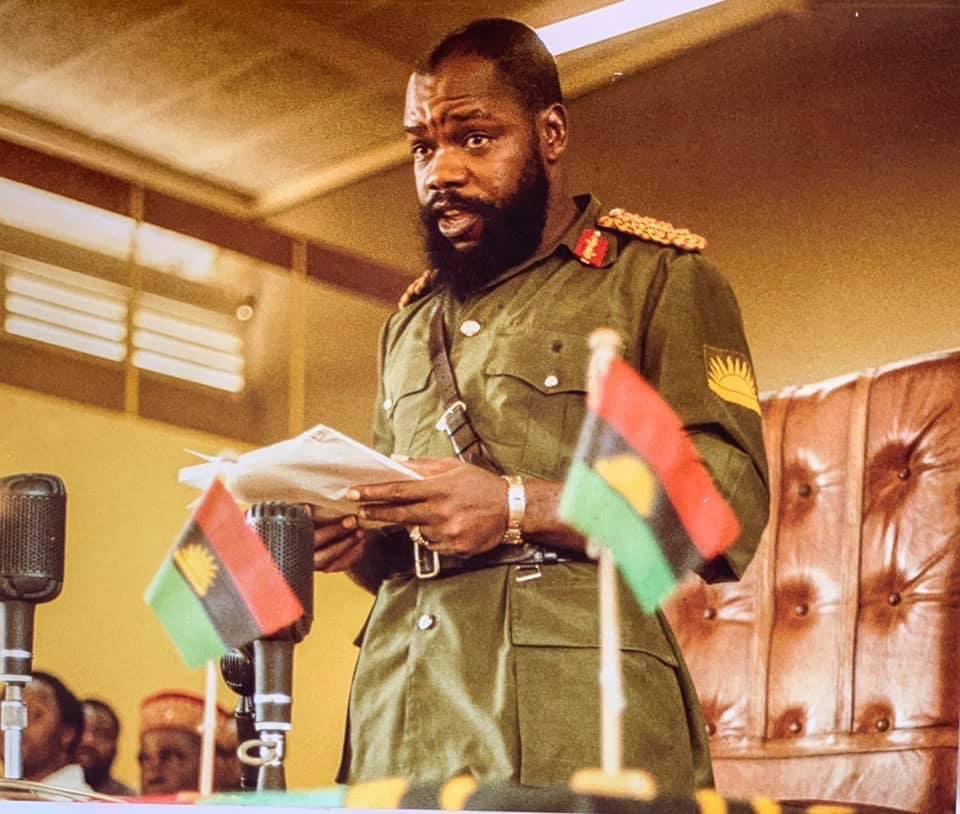
BIAFRA: POLITICS AND GEOGRAPHY
The Republic of Biafra was a unitary republic administered under emergency measures. It consisted of an executive branch, in the form of Chukwuemeka Odumegwu Ojukwu, and a judicial branch in the form of the Ministry of Justice. Its legal system was

The Republic of Biafra was a unitary republic administered under emergency measures. It consisted of an executive branch, in the form of Chukwuemeka Odumegwu Ojukwu, and a judicial branch in the form of the Ministry of Justice. Its legal system was


based on the English Common Law.
Upon the outbreak of the Biafra War, SIR LOUIS NWACHUKWU MBANEFO was appointed Chief Justice of Biafra and Ambassador Plenipotentiary. He was actively involved in the peace talks with the Nigerian Government and worked actively towards a
Upon the outbreak of the Biafra War, SIR LOUIS NWACHUKWU MBANEFO was appointed Chief Justice of Biafra and Ambassador Plenipotentiary. He was actively involved in the peace talks with the Nigerian Government and worked actively towards a
diplomatic resolution of the crisis.
The then Republic of Biafra comprised over 29,848 square miles (77,310 km2) of land, with terrestrial borders shared with Nigeria to the north and west, and with Cameroon to the east. Its coast was on the Gulf of Guinea of the South Atlantic
The then Republic of Biafra comprised over 29,848 square miles (77,310 km2) of land, with terrestrial borders shared with Nigeria to the north and west, and with Cameroon to the east. Its coast was on the Gulf of Guinea of the South Atlantic
Ocean in the south.
The country's northeast bordered the Benue Hills and mountains that lead to Cameroon. Three major rivers flow from Biafra into the Gulf of Guinea: the Imo River, the Cross River and the Niger River.
#BiafraHeroesDay2021
#CentreForMemories
The country's northeast bordered the Benue Hills and mountains that lead to Cameroon. Three major rivers flow from Biafra into the Gulf of Guinea: the Imo River, the Cross River and the Niger River.
#BiafraHeroesDay2021
#CentreForMemories
• • •
Missing some Tweet in this thread? You can try to
force a refresh















